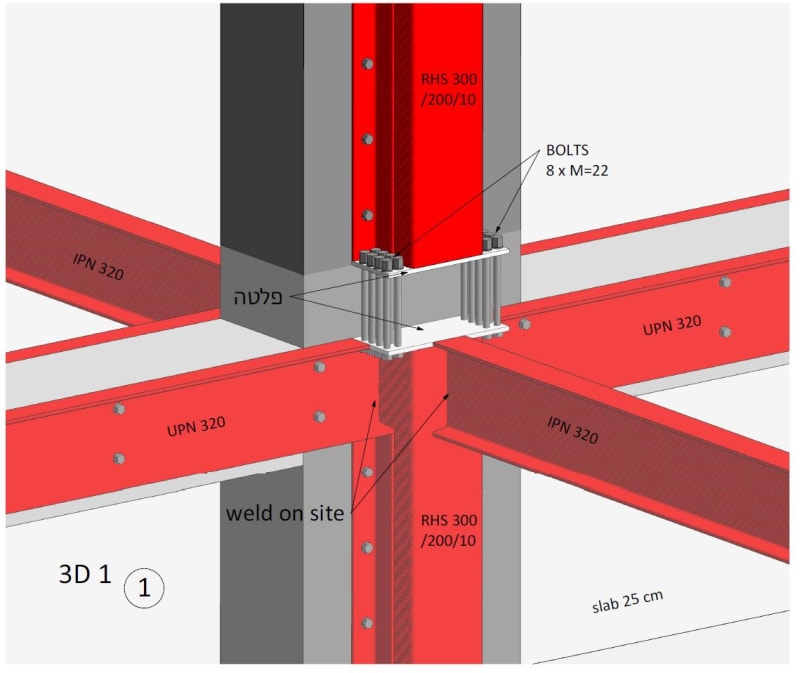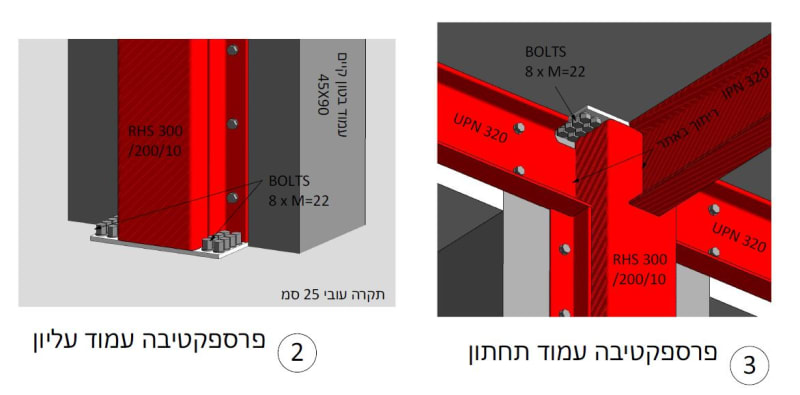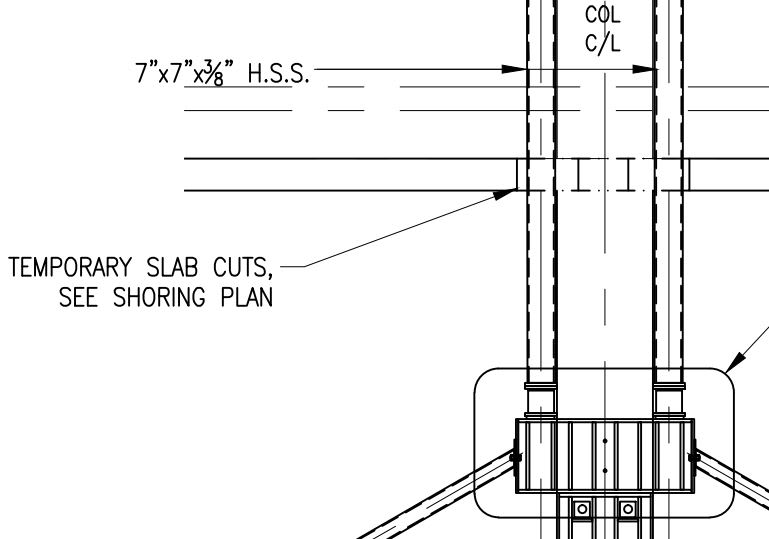NAFTALI-HAKOHEN
Civil/Environmental
HI ALL
IM DESIGNING A STRUSTURAL REFURB TO AN EXISTING CONCRETE STRUCTURE,
WERE SUPPORTING THE EXISTING STRUCTURAL ELEMENTS , BEAMS COLUMNS, WITH STEEL FRAMING,
SPECIFICALLY HERE , MY BOSS WANTS A CONTINUITY OF MOMENT THROUGH THE NEW STEEL COLUMNS, THAT ARE POSITIONED ABOVE AND BELOW THE EXISTING SLAB,


IVE PUT A STEEL PLATE, WITH 16 BOLTS THAT ARE DRILLED THROUGH THE EXISTING SLAB,
WEVE GOT MOMENTS OF AROUND 13 TM AT COLUMN BASE - TRANSFER,
WOULD LIKE SOME THOUGHTS ON THIS RATHER ORIGINAL CREATION!
NAFTALI
IM DESIGNING A STRUSTURAL REFURB TO AN EXISTING CONCRETE STRUCTURE,
WERE SUPPORTING THE EXISTING STRUCTURAL ELEMENTS , BEAMS COLUMNS, WITH STEEL FRAMING,
SPECIFICALLY HERE , MY BOSS WANTS A CONTINUITY OF MOMENT THROUGH THE NEW STEEL COLUMNS, THAT ARE POSITIONED ABOVE AND BELOW THE EXISTING SLAB,


IVE PUT A STEEL PLATE, WITH 16 BOLTS THAT ARE DRILLED THROUGH THE EXISTING SLAB,
WEVE GOT MOMENTS OF AROUND 13 TM AT COLUMN BASE - TRANSFER,
WOULD LIKE SOME THOUGHTS ON THIS RATHER ORIGINAL CREATION!
NAFTALI

